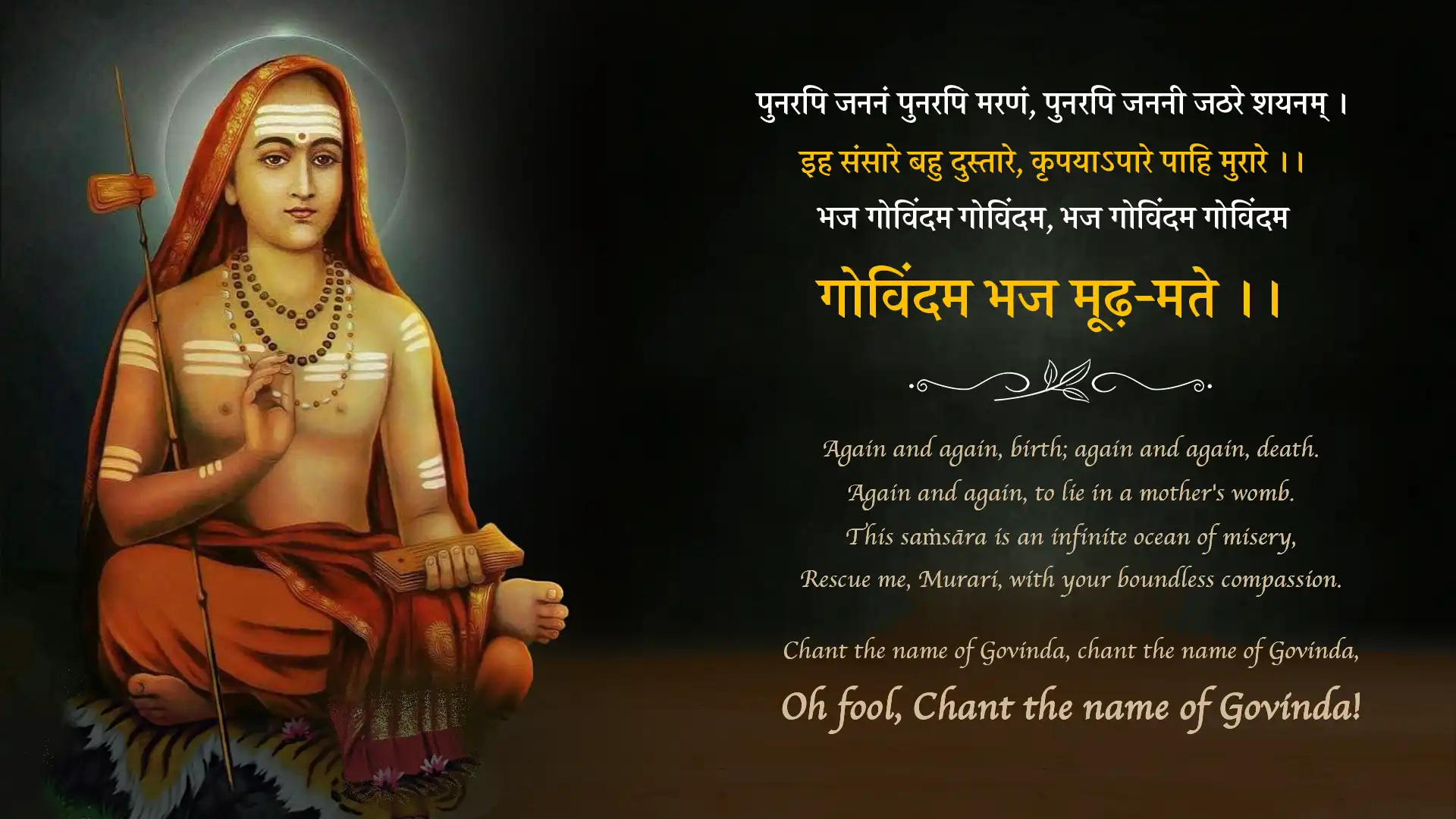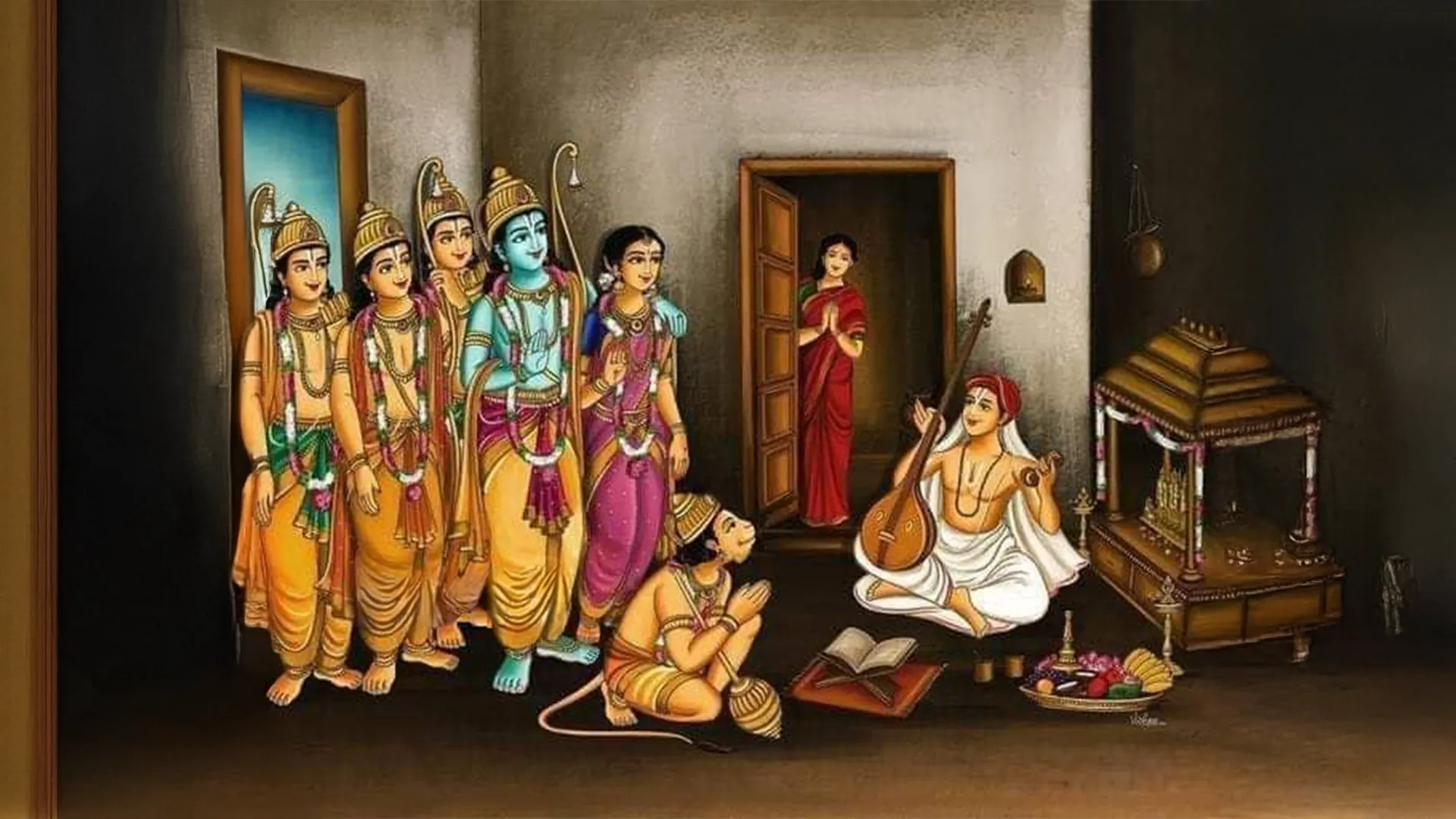Few figures stand out as prominently in the rich landscape of Indian philosophy as Adi Shankaracharya. Born in 500 BCE in the southern Indian state of Kerala, Shankara, as he is commonly known, remains one of the most influential thinkers in the history of Hinduism. His profound philosophical insights and organisational skills not only revitalised Hinduism but also left an indelible mark on the intellectual landscape of India.
Early Life and Education of Shankaracharya
Adi Shankaracharya was born in Vaishakh Shukla Panchami to a Brahmin family, to Shivaguru and Aryamba, in a small village named Kaladi. At the age of seven, he delved into studying the Vedas and left home when he was eight. Following that, he embarked on a quest to find a Guru. Young Shankaracharya journeyed at least 2000 km before finally meeting his Guru, Govind Bhagavatpada. Under Govinda Bhagavatpada's mentorship, Shankara delved into 'Gaudapadiya Karika', 'Brahmasutra', Vedas, and Upanishads. Shankaracharya swiftly mastered nearly all the ancient texts, to his teacher's astonishment.
He completed his writings by the age of sixteen, journeyed across India on foot to establish Dharma, and attained samadhi at the age of thirty-two. Legends surround his birth, with various accounts depicting miraculous events and divine interventions.
The Purpose - Divine Propagation
Around 2500 years ago, the popularity of Vedic religion in India declined as Buddhism and Jainism gained influence. Followers of Nyay and Sankhya Darshan were more focused on intellectual debates than on meditation and renunciation. Meanwhile, Jain and Buddhist monks critiqued the Vedas rather than practising their own beliefs. During that time, people were more involved in rituals and sacrifices, hoping to reach heaven. In response to this, all the Gods and Rishis sought Lord Shiva's help, who decided to be born into the world as 'शंकरम शंकराचार्यम, केशवं बाद्रायणम.'
Shankaram Shankaracharyam, Keshav Badrayanam
Lord Shiva descended to earth as Jagadguru Adi Shankaracharya, aiming to revive the Vedic faith in a society that had drifted away from devotion. Adi Shankaracharya aimed to unite various religious practices and promote the pure Vedic faith, as he noticed the rise of atheism due to excessive ritualism. This shift led to teachings that lacked focus on God and the spiritual essence of the soul, turning many religions into non-theistic practices.
He needed to develop a profound theory that could effectively dispel these misconceptions and practices. Drawing from the broader divine philosophy, he proclaimed, "ब्रह्म सत्यं जगन-मिथ्या जीवो ब्रह्मैव नापरः," which translates to Brahma, or God, is the ultimate truth, and the world is an illusion. You are not of this world; your soul is divine, unquestionably the same as Brahma. This led to the emergence of the Advaita philosophy.
Advaita philosophy by Shankaracharya
Advaita (advitīya/ अद्वैत) is made of two words, 'A' (not) and 'Dvaita' (dual), meaning 'non-dual'. This principle suggests that Brahman is the single ultimate reality, the temporary world is a deceptive manifestation of Brahman (ब्रह्मन्), and the true self, ātman (आत्मन्), is inseparable from Brahman. Adi Shankaracharya introduced a new viewpoint to the world. He stressed that the soul is Divine and eternal and surpasses the limitations of the body and mind. With his sharp reasoning, eloquent speaking, and Divine guidance, he journeyed throughout India, engaging in debates with proponents of different philosophical beliefs, persuading them, and successfully advancing the initial stage of his mission.
Sanatan Dharma encompasses two dimensions of God-realization: Nirakar and Sakar Brahma.
- Nirākār Brahma (निराकार ब्रह्म): Uniting with the formless Brahman
- Sākāra Brahma (साकार ब्रह्म): Experiencing God's divine bliss in a personal form.
In his works, Shankaracharya expounded on the Brahma Sutra, Upanishads, and Gita, focusing primarily on the first dimension of Sanatan Dharma in the initial phase of his spiritual teachings. His commentary, known as the Advaita Bhashya, emphasises the existence of a single absolute Brahman, which is formless, impersonal, and attributeless. He explored the Nirakar aspect of God for those seeking liberation, outlining 15 steps of self-discipline and practices to imbue Advait knowledge. Furthermore, at the beginning of his commentary on the Brahma Sutra, he delineated the four essential qualities and qualifications required for seekers on the path of Nirakar Brahm (Jñāna Mārga) - Vivek, Vairagya, Shat-sampatti, Mumukchhuttva. He cautioned that following the path of Nirakar Brahm is demanding, advising that failure to adhere to the provided instructions would lead to a downfall, trapping individuals in the cycle of birth and death. The core concept is that Advaita does not bestow anything; rather, it prevents individuals from becoming or experiencing anything in the worldly or divine realms. This is why Shankaracharya contradicted his own beliefs in the Pradobh Sudhakar.
Shankaracharya's Exploration of Sākāra and Nirākāra
Shankaracharya recognised that while his Advaita philosophy was technically accurate, it did not fully represent the Divine truth. Nevertheless, he understood the importance of establishing a solid foundation through his work. After restoring the glory of Sanatan Dharma in India, he unveiled his true form as a Krishna Bhakti to complement the shortcomings of Advaita philosophy and introduce the second dimension of Sanatan Dharma. He unveils the remainder of the Divine philosophy in his final work, the Prabodh Sudhakar, where he elaborates on Maya, Jeev, and God. He tells the secret that the followers of Nirakar Brahm also have to seek the grace of Sarkar Brahm(a personal form of God) to receive liberation. He acknowledged that Maya is a divine power and emphasised that God exists in two eternal forms: personal and impersonal. The journey towards understanding the impersonal aspect of God is known to be quite challenging. The divine form of God is described as all-beautiful and all-compassionate in the form of Krishna, who graciously appeared in the Yadu dynasty. Additionally, he emphasised that without selfless devotion to Krishna, a devotee's heart cannot be completely purified.
Shankaracharya's Literary Contributions: From Vedanta to Devotion
Shankaracharya's noteworthy contributions include his commentaries (Bhashyas) on the Prasthanatrayi, which include the Upanishads, the Bhagavad Gita, and the Brahma Sutras. In these commentaries, Shankara delved into the intricate aspects of Vedantic philosophy, providing deep insights that continue to captivate both seekers and scholars.
Shankaracharya's other renowned works are Sarva Vedanta-Siddhanta Sangraha, Viveka-Churamani, and Pradobh Sudhakar. He has also authored Aprokchanubhooti, Dash Shloki, Saundarya Lahiri, and numerous prayers and tributes to the personal form of God.
Legacy and Impact and Shankaracharya
Adi Shankaracharya's legacy endures through his Advaita Vedanta philosophy, efforts to unify Hinduism, and promotion of diversity and inclusivity. His teachings continue to inspire spiritual seekers with messages of unity, empathy, and self-discovery, transcending generations.
To watch Hindi lecture by Swami Mukundananda on Life and Teachings of Adi Shankaracharya: Click Here




What our Participants say